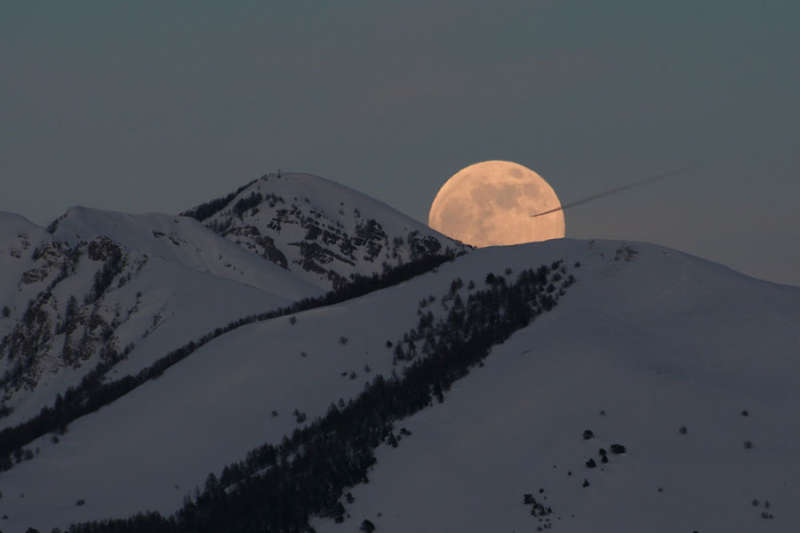Credit & Copyright: Vincent Jacques
Sky Shows
Explanation:
A larger moon will not be seen this year.
This past weekend, the
largest full Moon of 2009
could be seen from almost any clear location on planet
Earth at night.
The high
angular extent
of the full Moon was caused by the Moon
being unusually close to Earth during its
full phase.
Because the Moon circles the Earth in an elliptical
orbit,
its angular size depends on how close the Moon
is to closest approach (perigee) or furthest distance
(apogee).
Even so, the Moon's was only about 30 percent larger in area and brightness than
a more typical full Moon.
In the
above image,
a dramatically positioned Moon was photographed
rising above the
Alps from
Breil-sur-Roya
in the southeast of France.
Taken with an ordinary digital camera but extraordinary timing,
the image also captured a
crossing jet plane.
The last full Moon, in 2008 December, was the
largest full moon of 2008.
1999 2000 2001 2002 2003 2004 2005 2006 2007 2008 2009 2010 2011 2012 2013 2014 2015 2016 2017 2018 2019 2020 2021 2022 2023 2024 2025 |
Yanvar' Fevral' Mart Aprel' Mai Iyun' Iyul' Avgust Sentyabr' Oktyabr' Noyabr' Dekabr' |
NASA Web Site Statements, Warnings, and Disclaimers
NASA Official: Jay Norris. Specific rights apply.
A service of: LHEA at NASA / GSFC
& Michigan Tech. U.
|
Publikacii s klyuchevymi slovami:
Moon - Luna
Publikacii so slovami: Moon - Luna | |
Sm. takzhe:
Vse publikacii na tu zhe temu >> | |
